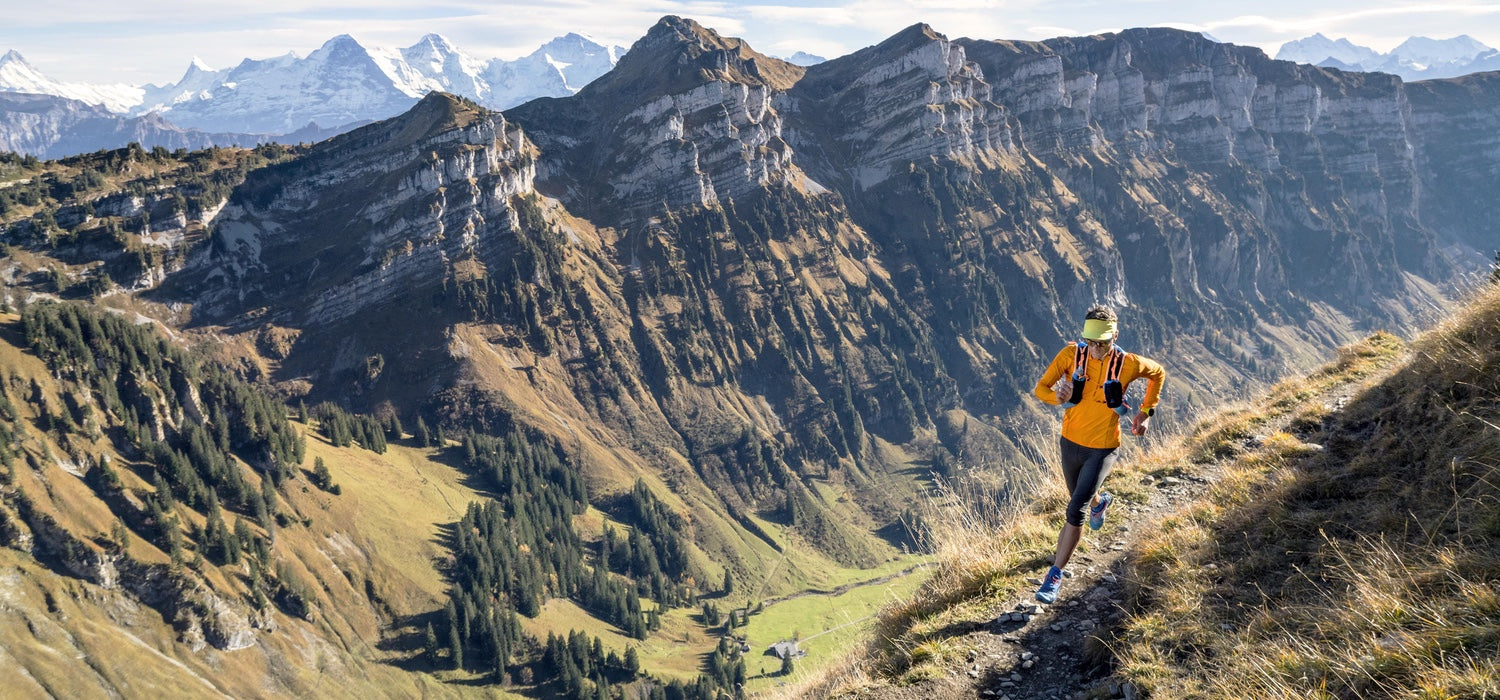
Quick morning jogs and 100-mile ultramarathons may be vastly different endeavors, but they both have the need for proper hydration in common. Running while carrying anything poses a unique set of challenges, but fortunately some big strides have been made in the realm of running hydration options over the past few years. Here are our top recommendations for how to stay hydrated while running.
Let’s start simple: you’re going out for a quick run to get in a few miles and want to carry a small amount of water to quench your thirst along the way. A handheld soft flask is one of the best ways to stay hydrated when running shorter distances and carrying smaller amounts of fluids. With insulation to prevent heat transfer from hand to water, HydraPak’s UltraFlask IT 500 mL is a great option here. Osprey also makes the Duro Hand and Dyna Hand, which each hold a 250 mL HydraPak-made soft flask and have some small pockets to carry an energy gel or a house key.
But how do you stay hydrated while running long distances? Longer runs require more fluids and purpose-built running hydration vests have become quite popular over the past five years. Combined with soft flasks that compress as you drink the water inside them down, vests minimize load movement as you jog down the road or trail. Our partners at Salomon and Nathan make excellent models utilizing various sizes of HydraPak-made soft flasks. If a full vest isn’t your thing, HydraPak offers a variety of different soft flasks that are perfect for stuffing in small pockets on athletic apparel.

Hydration backpacks—with a reservoir system—are an excellent alternative to vests for carrying larger volumes of water. Some vests actually come with a sleeve in the back to fit a slimmer hydration reservoir—like a HydraPak Velocity 1.5 L or Velocity IT 1.5 L—or there’s plenty of running backpack options from our partners at Salomon, Nathan, and Osprey. Many runners prefer a more traditional backpack/reservoir system, because drinking from a hydration tube is fast and easy while moving down the trail.
No matter how you choose to carry fluids on your run, there’s a few other consideration to make to ensure it goes off successfully. It’s essential to figure out how long your run will be and how much water to drink while running. If you know you're going for an extra long distance and there’s water sources available on your run, you could replenish in the field by filtering water into your bottles or reservoir. Many people opt to supplement with electrolytes on longer runs, and taking into consideration the temperatures and elevation along your route is the last piece of the puzzle for being fully prepared for optimal hydration.